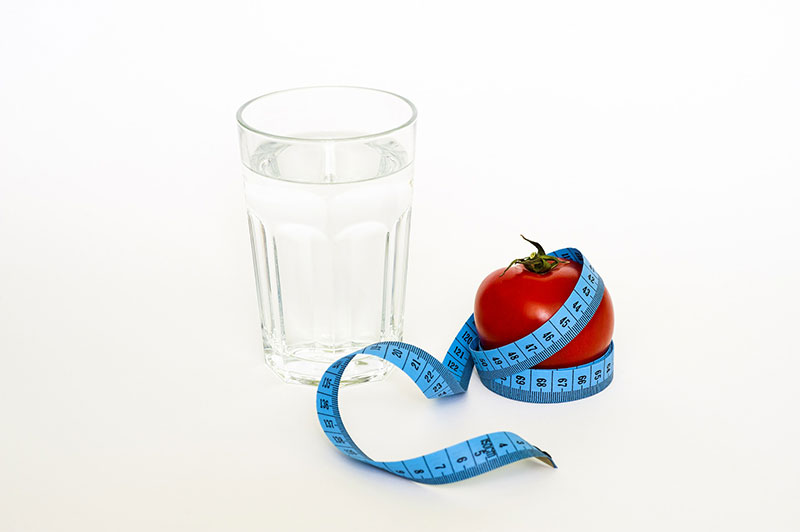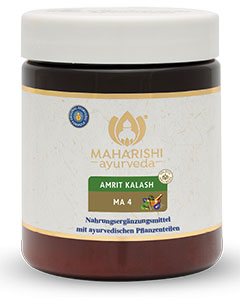In the wellness sector, a huge profit-generating branch has grown around dieting and detoxification, with new trends promising rapid weight loss appearing every year. In Germany alone, around 20 million people were interested in dieting and diet products last year; 60% of Germans have already tried at least one method for losing weight. Nevertheless, the percentage of overweight people is around 60% and rising.
Many cleansing methods aim to remove toxins from the body, reduce weight, and increase wellbeing. This can be done, for example, through a restricted diet, with the descriptions usually including a recommendation to support the regimen with certain heavily advertised products.
Especially in the USA, there is a huge demand for detox products, partially driven by people’s insecurity about their bodies. Consequently, we hear of action being taken against many companies that distribute illegal substances, use potentially harmful ingredients, or advertise with unsupported therapeutic claims.

General benefits and points of caution
During a detox cure, the food intake is changed, often from a diet that is high in calories and low in nutrients, to a nutritionally relieving, light diet that is easy on the system. This initially leads to quick results: most people start to feel much better inside their own body, because they habitually consume too much white flour, sugar and (hidden) alcohols by eating preserved and highly processed foods, and this has led to a body that feels heavy and sluggish.
The change of diet unburdens the digestive system and at the same time inspires the adoption of other health-promoting practices, such as yoga or meditation.
This is also the aim of the Ayurvedic Ama-cleansing cures, which are particularly recommended at the major seasonal changes in spring and autumn: Ama (toxins) should be reduced and Agni (the digestive fire) should be stimulated.
A strong Agni is essential for the detoxification of the system, because a weak Agni is usually the cause of the accumulation of toxins in the first place. Even the healthiest food cannot be digested well if Agni is only burning on low flame. Then improperly metabolized food becomes Ama and is deposited in the various tissues of the body, leading to heaviness and the development of disease. Most cures do not assess the state of the digestive fire, although according to Ayurveda this is one of the most important first steps of any treatment.
Another point is that any cleansing treatment is inherently Vata-increasing: the light, dry, rough, mobile and cold qualities are increased. If a course of treatment is not followed by a suitable after-cure, this can lead to an imbalance of Vata Dosha and aggravate Vata problems such as disorders of the joints, skin dryness, hair loss, constipation, or nervous conditions.
Also, during an intensive detox phase, the immune defense can be impaired temporarily. In Ayurveda, this is taken into account during the after-cure treatment and counteracted by measures to strengthen the immune system, such as the intake of Amrit Kalash.
During intensive fasting cures, problems can occur, from deficiencies in vitamins, minerals and nutrients to a derailed electrolyte balance. This must be taken into account, especially when taking diuretics or other medications with an effect profile that can change significantly under these circumstances.
Also, detox cures can be a powerful trigger for people with an eating disorder or body image disturbance, fueling further unhealthy behaviors such as the misuse of laxatives. In Germany alone, over a million people resort to laxatives several times a month.
A few detox trends seen in the light of Ayurveda

Cures with juices or smoothies
In cleansing cures that rely on juices or smoothies, usually only liquid food, consisting of fruit and vegetable juices or smoothies, is consumed for a few days or even up to a few weeks. The vital substance-rich and at the same time low-calorie cure gives the digestive system a welcome break and time for regeneration. A few points to consider here:
From an Ayurvedic perspective, we cannot recommend the same for everyone – adaptation to each person’s individual body type and any existing disorders is necessary. People with a constitution dominated by Pitta and/or Kapha Dosha usually find juice fasting relatively easy, but for people with a Vata imbalance, it leads to a further increase in light, dry and cold qualities.
The time of year should also be considered: while cold juices and smoothies may not cause problems for most people in summer, they are not recommended during winter time, because then the cooling effect is too strong and can weaken the digestive fire.
One more important factor is that digestibility varies greatly with the choice of fruits and vegetables: different combinations can give very different results. Generally, the simplest way to make food easier to digest is to reduce the number of ingredients.
Lemon juice

During this regimen, the only intake is water mixed with lemon juice, maple syrup and cayenne pepper. Stanley Burrough developed this fasting cure in the 1940s with the idea of completely detoxifying the body within 10 days. The lemon juice provides valuable vitamin C, the sugar from the maple syrup is used to keep the circulation going and the capsaicin from the pepper is said to boost the metabolism.
With this cure, pop star Beyonce Knowles lost 20 pounds in 10 days for her role in the movie Dreamgirls. Subsequently, sales of maple syrup skyrocketed.
People with a pronounced Pitta disorder are not advised to take this cure, as the acidic properties of the lemon juice will further increase the elevated Pitta Dosha and may lead to an increase in symptoms. For people with a Vata or Vata-Pitta constitution, a cleanse of this type can be very exhausting.
As part of a wholesome morning routine, Ayurveda highly recommends warm water with a little lemon juice and good quality honey – this stimulates the digestive system and assists the liver in detoxification. But a cure with lemon juice alone should generally be avoided.
Water fasting

Fasting on water only is usually done for 1–3 days, but sometimes much longer. Here there is a risk of mineral deficiencies and electrolyte imbalances, especially with pre-existing conditions such as diabetes, kidney disease or when taking medication. Therefore, this form of fasting should only be undertaken under professional supervision.
If you have Kapha-Dosha predominance or a lot of Ama, a warm water cleanse (like Langhana) may be recommended for a limited time.
But if you have high Vata Dosha, this form of fasting would be far too draining; and if you have excess Pitta Dosha, going without any food at all will likely give you a bad temper and severe discomfort, as your digestive fire is naturally very acute.
Colon cleanse
This involves cleansing the colon or lower intestinal tract with laxatives, enemas or colon hydrotherapy (colonic irrigation). Especially people with chronic constipation will benefit from this procedure. However, Ayurveda looks beyond the apparent problem and considers the entire system, including Ama, Agni, the Doshas and the tissues (Dhatus) – thus not only preventing harm, but also producing a much greater and truly holistic effect.
Many people habitually use psyllium husks, chia seeds or supplements like Triphala to stimulate their digestion, but do these work in the long run? Without addressing the real cause of intestinal sluggishness, the condition will persist. The main goal in Ayurveda is not ‘fixing’ problems but promoting complete health by attending to the cause of the disorder. If the root cause is not understood and addressed, chronic constipation because of Vata aggravation can lead to lower back pain, hemorrhoids, and in some cases neuropathy.
A colon cleanse is sometimes compared to the therapeutic enema or cleansing therapy that in Ayurveda is known as Basti. However, Bastis are much more than simple enemas. In Charaka Samhita, Basti is considered Ardha Chikitsa – ‘half of all (cleansing) therapies.’
Bastis are such effective therapies because they wonderfully balance Vata Dosha and are also directly related to balanced functioning of Pitta and Kapha Dosha. Thus, Ayurvedic Bastis are very intensive cleanses, adapted to your individual needs in many ways: base ingredients and herbs, dosage, and frequency are all carefully adjusted for maximum benefit. Therefore, without clear guidance, it’s better to refrain from self-treatment.
In addition to the detox regimens discussed here, there are numerous others, some more trendy than others, which, from an Ayurvedic perspective, cannot be equally suitable for everyone.
If you are feeling that your body needs a break and you want to relieve your system, we recommend an anti-Ama cure as a simple, gentle and effective way to do so at home. Have a look at this 10-day cure to eliminate Ama (scroll way down).
Of course, for a particularly deep purification, we can recommend a traditional Panchakarma course of treatment. In Bad Ems, you will experience an authentic Panchakarma cure under medical supervision and with specially trained, empathetic therapists, without traveling far. Here in the heart of Germany you will find Europe’s leading private clinic for Ayurveda.
Your Maharishi Ayurveda team in Bad Ems

Download the article as a PDF file
© Maharishi Ayurveda Health Centre Bad Ems
